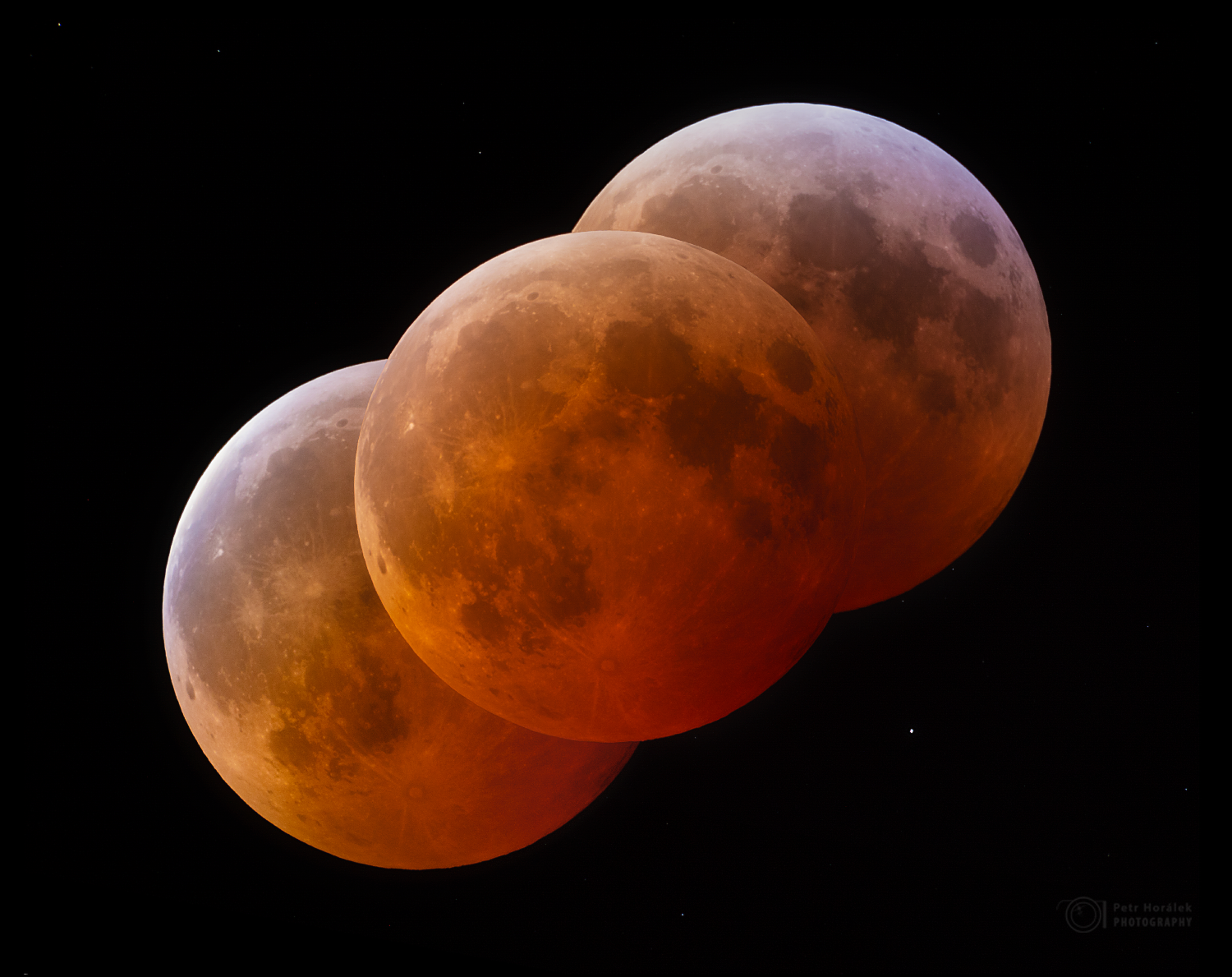
On 14 March 2025 a total lunar eclipse occurred especially over Americas and Pacific Ocean. I was pleased to make my observation of this particular eclipse from NSF Cerro Tololo Inter-American Observatory, Chile. Colors in the Earth’s shadow were vivid, including the turquoise effect at the start and even end of the eclipse (where primarily the ozone layer causes a bluish tint, referring to Richard Keen’s explanation from 2007). The effect was easily capturable on camera, but also nicely visible to binoculars. During the totality, the Moon was pretty dark when the eclipse started, however after the mid-eclipse it became much brighter, which might be result of inhomogeneous distribution of aerosols in the atmosphere, especially due to recent volcanic eruptions. The front image was taken on Canon R5, 1000mm + 1.4 converter, ISO 800, 8s exposures, tracked on Vixen GP-2.
Upper image shows the maximum phase of the eclipse surrounded by stars, captured through 500mm/f5.6 telephoto lens, ISO 1250, HDR, tracked on Vixen GP-2 mount. Below you can find some nice views (including virtual reality version) of the wonderful experience.
Enjoy the virtual reality… and many more
Here are other views, this time wide ones. You can see how epic the sky was during the totality as the Moon darkened enough to make the majestic Milky Way, faint belt of Zodiacal Light, and prominent airglow pop out. Used Canon Ra, Sigma 35mm, f1.8, ISO 8000, 81x10s (single exposures stitched to panorama), tripod. Moon is result of HDR work.










